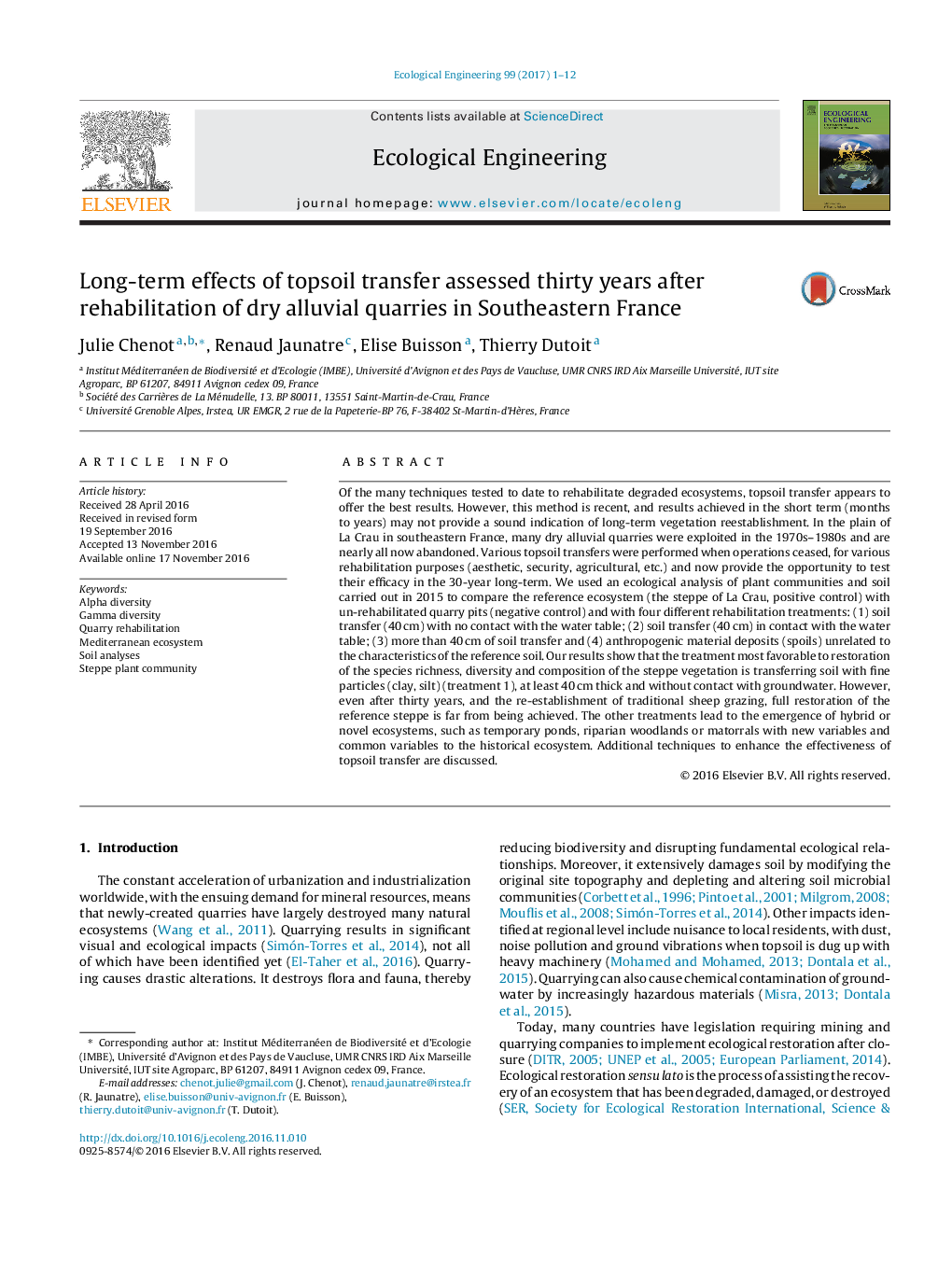| کد مقاله | کد نشریه | سال انتشار | مقاله انگلیسی | نسخه تمام متن |
|---|---|---|---|---|
| 5743965 | 1618000 | 2017 | 12 صفحه PDF | دانلود رایگان |
Of the many techniques tested to date to rehabilitate degraded ecosystems, topsoil transfer appears to offer the best results. However, this method is recent, and results achieved in the short term (months to years) may not provide a sound indication of long-term vegetation reestablishment. In the plain of La Crau in southeastern France, many dry alluvial quarries were exploited in the 1970s-1980s and are nearly all now abandoned. Various topsoil transfers were performed when operations ceased, for various rehabilitation purposes (aesthetic, security, agricultural, etc.) and now provide the opportunity to test their efficacy in the 30-year long-term. We used an ecological analysis of plant communities and soil carried out in 2015 to compare the reference ecosystem (the steppe of La Crau, positive control) with un-rehabilitated quarry pits (negative control) and with four different rehabilitation treatments: (1) soil transfer (40Â cm) with no contact with the water table; (2) soil transfer (40Â cm) in contact with the water table; (3) more than 40Â cm of soil transfer and (4) anthropogenic material deposits (spoils) unrelated to the characteristics of the reference soil. Our results show that the treatment most favorable to restoration of the species richness, diversity and composition of the steppe vegetation is transferring soil with fine particles (clay, silt) (treatment 1), at least 40Â cm thick and without contact with groundwater. However, even after thirty years, and the re-establishment of traditional sheep grazing, full restoration of the reference steppe is far from being achieved. The other treatments lead to the emergence of hybrid or novel ecosystems, such as temporary ponds, riparian woodlands or matorrals with new variables and common variables to the historical ecosystem. Additional techniques to enhance the effectiveness of topsoil transfer are discussed.
Journal: Ecological Engineering - Volume 99, February 2017, Pages 1-12
